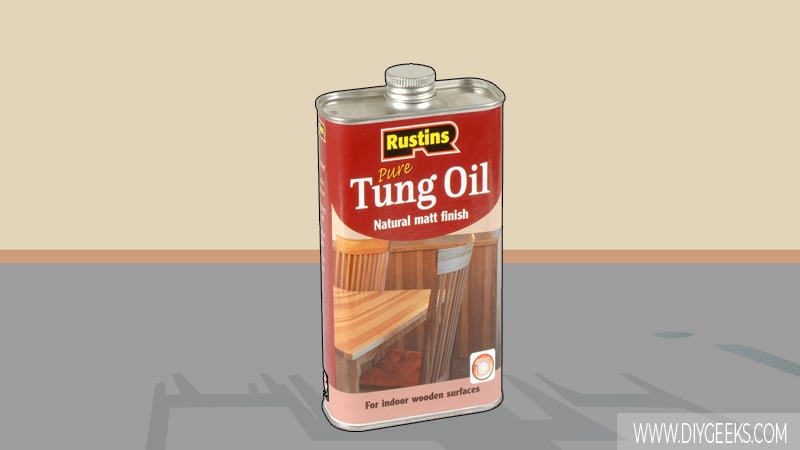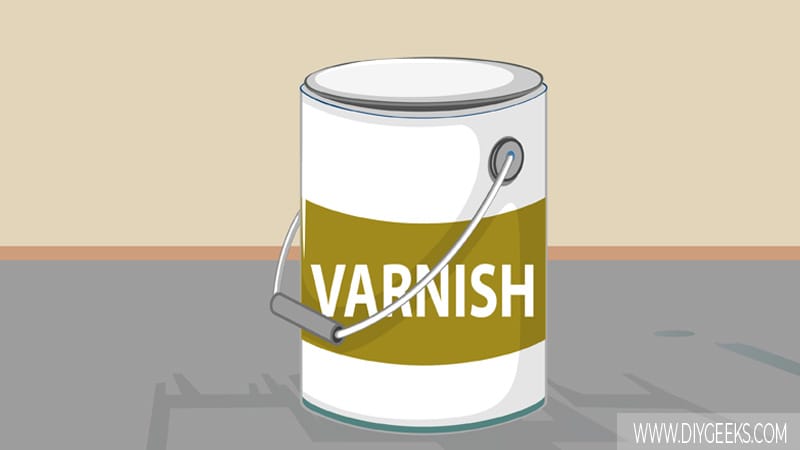Wood oils are natural wood finishes that enhance the surface appearance and offer low protection. Varnish is a protective coating that protects and seals surfaces by creating a moisture-resistant layer (barrier).
The main difference is that wood oils are designed to penetrate and enhance the wood’s appearance by highlighting surface grains and texture. Varnish is designed to as a topical finish that protects and seals surfaces by creating a moisture-resistant barrier (or layer).
What are Wood Oils?

Wood oil is a natural wood finish that enhances the surface appearance, offers low protection levels, and highlights surface texture and patterns.
These oils penetrate the surface pores (or grain) and create a tinted natural appearance over wood.
Different wood oil types are listed below.
- Danish Oil.
- Teak Oil.
- Linseed Oil.
- Tung Oil.
- Mineral Oil.
What is Varnish?

Varnish is a protective coating that forms a moisture-resistant layer over the surface and protects it from water or moisture penetration. It creates a glossy transparent (or colored) coating over the surface.
There are different varnish types that each have unique features, but all types offer good surface protection. Varnish is a topical finish and doesn’t penetrate the surface pores, instead it stays over the surface top layer and creates a protective barrier over it.
Related Read: Can You Varnish over Wood Oils?
Wood Oil vs Varnish
The differences between wood oil and varnish are listed below.
Wood Protection
Varnish offers better wood protection than wood oils as it forms a moisture-resistant coating that prevents water penetration.
Wood oils offer low wood protection as their finish will be removed if exposed to constant water or weather elements (rainfall).
Moisture Resistance
Varnish offers better moisture resistance than wood oils as it forms a glossy moisture-resistant coating that protects surfaces from water or moisture.
Wood oils offer low moisture resistance as their finish can’t withstand constant water or moisture exposure.
Dry Time
Varnish dries faster than wood oils as it’s formulated with fast-drying additives and has a thinner viscosity.
Most wood oils take longer to dry as their formula consists of natural additives that take longer to evaporate and become hard (rigid).
Purpose and Use
Varnish is used to protect and seal painted, stained, or bare surfaces from moisture, water, scratches, and weather elements. It’s a topcoat protective finish that adheres over surfaces without penetrating them.
Wood oil is used to enhance the bare surface appearance by highlighting the surface grain or texture. It’s a penetrating finish that needs to penetrate the wood pores to adhere.
Wood oils can’t adhere over painted, stained, or sealed surfaces.
Durability
Varnish lasts longer than wood oils as it’s formulated with protective additives that form a hard (rigid) finish that can withstand water or moisture exposure better.
Wood oils can last a few years if they are applied over low-traffic interior surfaces that aren’t exposed to constant water or moisture. If the wood oil finish is applied over high-traffic surfaces that are exposed to outdoor weather elements, the finish will gradually peel off.
Price
Wood oil is more expensive than varnish as it’s a natural oil that takes longer to extract. For instance, Tung oil is created by the Tung tree which is native to Southern China.
Interior or Exterior Use
You can use varnish for interior and exterior surfaces, but the sealer is more suited for exterior surfaces exposed to high traffic and weather elements.
You can use wood oil for interior and exterior surfaces that aren’t exposed to high traffic, constant water, or weather elements. Wood oils offer low surface protection and can’t protect a surface if it’s exposed to constant water or moisture.
Cleaning and Maintenance
Varnish is easier to clean and maintain than wood oil as its glossy finish repels dust and dirt and can be cleaned with solvent-based products.
Wood oil finish is harder to clean and maintain as it can accumulate dirt while drying and you can’t use solvent-based products to clean it.
Sheen Level
Varnish offers more sheen (or gloss) finishes than wood oils. You can use varnish in matte, eggshell, satin, semi-gloss, and high-gloss sheen.
Which Wood Finish Do You Need?
Before choosing a wood finish, consider the following things.
- Budget: Use varnish if you have a low budget as it costs less than most wood oils.
- Wood Protection: Use varnish if you need better wood protection.
- Interior or Exterior Surfaces: Use wood oils over interior surfaces and varnish over exterior surfaces.
Are Varnish and Wood Oils Compatible?
Varnish and wood oils are compatible with each other as both have oils in their formula. You can apply varnish over wood oil to increase surface protection and water resistance.
You can’t apply wood oil over a varnish finish as the varnish moisture-resistant layer (barrier) doesn’t allow wood oil to penetrate the surface pores or adhere.


